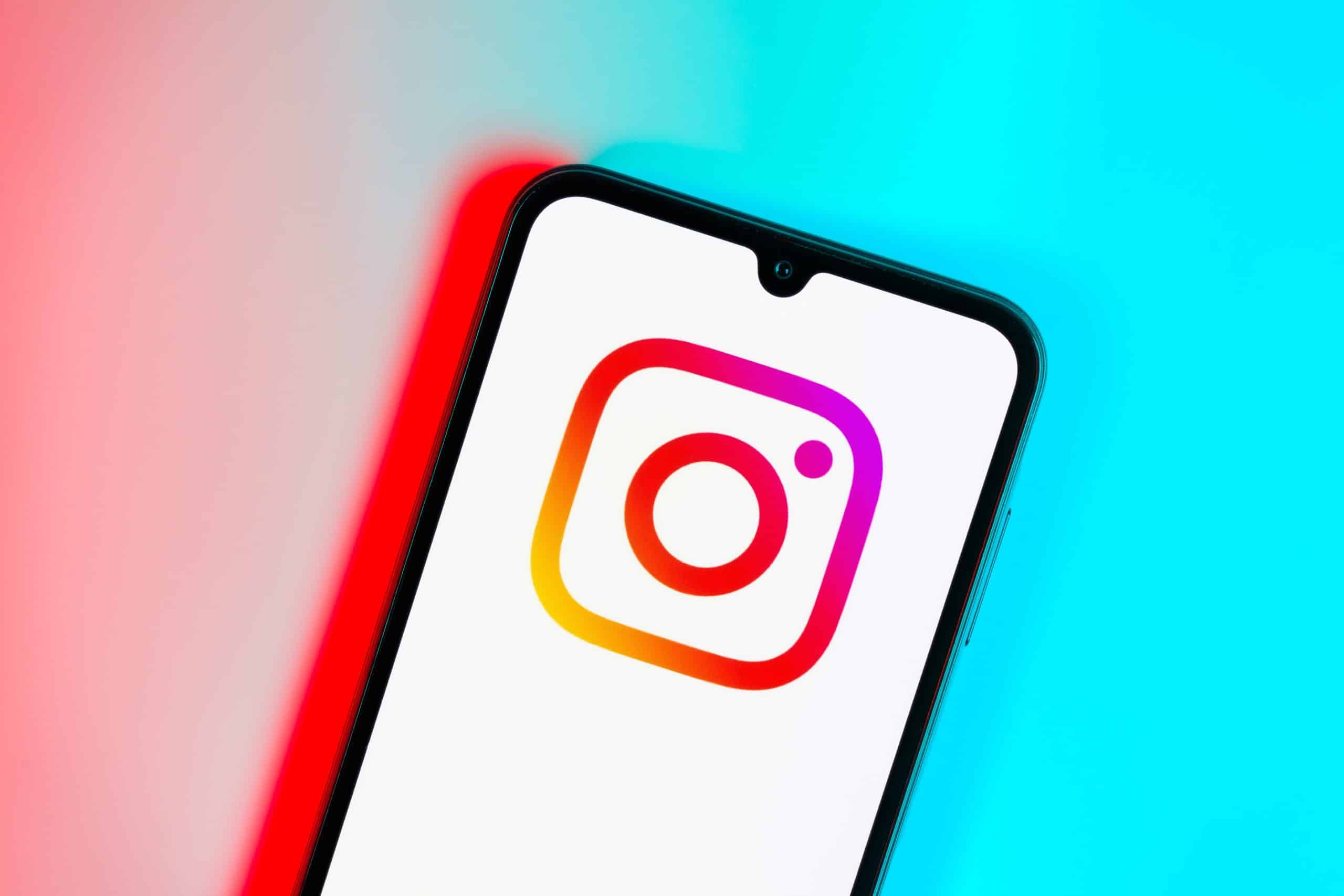Long gone are the days where Instagram was simply a place to share photos with your friends (including those filters where you couldn’t really see what was actually in the picture). Today, Instagram is a powerful social media marketing tool that can help businesses connect with customers all over the world, increase brand awareness, and make sales both within the platform and on business websites. It’s become a go-to destination online for customers looking for new products to try and businesses to explore.
Despite the rise of alternative apps like TikTok, Instagram remains one of the most popular social media sites across all demographics, making it a great option for advertising your business online.
What is Instagram Marketing?
Marketing on Instagram is where a business or individual uses the social media site to promote either themselves or the company as a whole. The goal is to increase the number of followers to the brand’s Instagram account, which can then drive more sales through the website or directly within Instagram via shoppable posts.
Because Instagram is a visual platform, it works best for businesses who are able to post image and video content regularly, as consistency is key to building an engaged and active following.
Why Use Instagram to Advertise Your Small Business?
For the last decade, Instagram has been one of the most globally popular social media platforms across multiple age groups and demographics. As of January 2025, 28.3% of US Instagram users were between the ages of 25 and 34, making this group the largest audience share in the country. This was closely followed by 18- to 24-year-olds, making up 26.5%, and 35- to 44-year-olds, who made up 19.4%. With nearly 170 million users in the U.S. alone, Instagram’s continued popularity makes it an excellent opportunity for small businesses to reach new audiences.
Social media users are typically seeking out funny, informative, or educational content when they’re scrolling through different platforms and apps. Tailoring your business content on a platform like Instagram to meet these users’ needs can help you build meaningful and long-lasting relationships with these individuals, who will remember your brand when they’re looking to make a purchase.
Despite the rise of alternative social media platforms, Instagram marketers still report high levels of engagement and significant return on investment (ROI), both from organic social posts and Instagram advertising.
Types of Instagram Posts
Posts and Carousels
The most traditional Instagram post is an image or video, or several in the case of a carousel, shared to the feed as a post. Carousels allow users to swipe through multiple visual pieces of content in a single post. These posts stay on your profile and can be referenced again and again. Captions can be added to enhance the story told in the visuals.
Reels
Instagram Reels are short-form videos in a vertical format. Many businesses have seen great success using Reels, thanks to the high organic reach this type of content achieves due to the Instagram algorithm. This type of post is good for quick tutorials, behind-the-scenes glimpses into your business, or to highlight a product. Using trending audio and text overlays on videos can also boost engagement.
Stories and Stickers
Stories live on your profile for 24 hours before disappearing, making them a helpful tool for promoting quicker pieces of content. These are typically more casual and real-time than posts and Reels, which stay on your profile indefinitely. Stickers can be added to stories for an interactive element, such as polls, questions, or countdowns.
Instagram Live
Looking to connect with your followers in real-time? Instagram Live is a great way to build trust and engagement through a livestream where users can directly ask you questions and have them instantly answered. Lives are a good way to build excitement around a product launch, talk about the brand in more detail, and engage with followers. Instagram Live sessions can also be saved to your profile for future viewing.
Ads and Shoppable Posts
Businesses can run paid advertising in multiple formats, such as via Stories or carousel-based advertising. These are managed through Meta Business Manager and will appear to users in a similar way to organic posts, but with a call-to-action that allows them to click through to your website to make a purchase. You can also run shoppable posts both as an ad or organically, where users can make purchases from your online store directly within Instagram.
Sponsored Posts and Partnerships
Collaborating with influencers or other brands can help businesses expand their reach and boost their credibility. These posts should seamlessly integrate into a user’s feed like an organic post, making them an effective way to promote your products without feeling too sales-heavy.
7 Strategies to Promote Your Business on Instagram
1. Optimize Your Profile for Conversions
Take advantage of the space you have in your profile bio with interesting content that says who you are and what users can expect if they follow you. Set up a page on your website specifically for a linkable page that you can include in your bio that takes users to different areas of your website from Instagram — also known as the “link in bio” section.
Keywords can be beneficial in your bio for Instagram search optimization, but remember that you have a character limit, so try several bio options until you find one that works for you.
If you’re a local business, don’t forget to geotag your posts. This means that anyone who clicks on your location within Instagram can see your posts listed there, along with any others that users may have tagged themselves. This is great for restaurants, bars, and retail businesses.
2. Run Targeted Ads
If you’re looking for a faster way to reach your audience while you build up your profile organically, Instagram ads can be helpful to reach more people with specific targeting. Promote a sale, a new product launch, or work with influencers to reach new markets. Experiment with different post formats in your ads, like carousels or video ads, to see what works best.
3. Partner With Micro-Influencers
You don’t have to work with the biggest and most well-known influencers in your industry to have an impact. Micro-influencers, or those with 1,000-100,000 followers, often have niche, but very engaged, audiences that you can benefit from.
Working with micro-influencers can also be more cost effective for your marketing budget, as they’re unlikely to charge the same per-post prices that an influencer with millions of followers would. If you’re not sure about influencer marketing for your brand, this can be a good place to start.
4. Create Interactive Stories
The Stories feature on Instagram remains one of the most popular additions to the platform, so make use of all this has to offer. Engage with your users and encourage them to engage with you through polls, quizzes, and Q&As through your stories.
5. Encourage User-Generated Content (UGC)
There’s nothing better than a loyal fan base, so ask your top customers if they’d be willing to create images or videos of them using or discussing your products that you can share on your social channels. This is one of the best ways to build trust with new followers, as they can see real people who already love your brand.
6. Use Instagram Shopping Features
If you want to make more sales on Instagram, consider setting up an IG shop to encourage users to make purchases within Instagram without ever having to leave the site. The commerce tools within Instagram are customizable and easy to use as a business owner. If you’re running an e-commerce site on Shopify, you can integrate these two platforms to set up a synced sales channel, to keep better track of revenue and inventory.
7. Repurpose Your Content From Other Platforms
If you’re already creating content for other social media channels, see where you might be able to repurpose this content onto Instagram. Not all of your followers will be on each site, and this can save you significant time in content creation when you cross-post your images or videos elsewhere. This can also help you stay consistent with your posting schedule, which is essential for continued growth on social media.
How to Create Engaging Content on Instagram as a Small Business
Know Your Audience
Understanding exactly who your ideal audience is should be the first step in any marketing plan, social media or otherwise. This is the only way you can create content that will resonate with who you’re trying to target. Think about what their pain points are, why they might want to become your customer, and how exactly your products or services can help them. From there, you can build content that’s more likely to create a connection, as it addresses a particular need they have.
Create High-Quality Content
As a visual platform, Instagram relies on quality content. Images should be well-lit and videos should have clear visuals and audio. Maintain consistency across your posts that align with your branding, so you look professional and cohesive when it comes to all aspects of your visual branding.
Tell a Great Story
The most successful type of content on Instagram all comes back to great storytelling, whether you’re informing your audience about something or trying to entertain them. Sharing your business journey, get-to-know-us posts about your team, and even behind-the-scenes glimpses at your products are all good ways to build a more personal connection with your audience.
How to Set Up Your Instagram Business Account
Step 1: Create Your Account
If you have an Instagram account already, you can switch from a personal to business account in your settings. Navigate to Settings and Privacy, then Account Type. From there you can switch to a professional account and select a category that most aligns with what you do. If you’re creating a new account for your business, simply sign up for a new account and then follow the steps above to switch from personal to business.
Step 2: Optimize Your Profile
Once your account is created, you can update your profile picture (usually your business logo), add a link to your bio, contact information, and address information if you have a physical location.
Step 3: Connect Your Products
For businesses setting up an Instagram Shop, you can go into Meta’s Commerce Manager and click on Start Now to begin creating your shopfront. If you’re already using an e-commerce tool like Shopify, WooCommerce, or BigCommerce, this is where you can connect to those platforms and upload your product information. You can start adding items to your shop straight away and create customer collections just for Instagram.
Apps and Tools to Use With Instagram
Content Creation
Making content is the first priority once you have your Instagram account set up. Tools like Canva and Photoshop are great for designing custom graphics for your posts, Stories, and Reels, while CapCut and Mojo are useful video editors that help you cut together video content and add effects like music and text.
Scheduling
You may prefer to schedule all of your content posting for the week or month at one time, rather than posting in real time. There are plenty of apps and tools out there to help you do this, such as Later, Buffer, Hootsuite, and Sprout Social.
Analytics
Knowing how your Instagram marketing is performing is essential for knowing exactly what you should be posting and how your content is resonating with your audience. Tools like Google Analytics can only give you information about what happens when a user moves from Instagram to your website, so other tools are needed to see exactly what’s happening on Instagram itself. The native insights on Instagram are limited, so tools like Iconosquare or Sprout Social can provide more in-depth analysis of how your content is performing.
How to Track and Optimize the Performance of Instagram Ads
Understanding the performance of your paid Instagram advertising is critical, even more so than your organic posts, as you need to see what ROI your ads are generating to more effectively optimize your marketing budget. Track key metrics like reach and impressions, engagement rate, click-through rate (CTR), and conversion rate through Meta Business Manager to determine how well your ads are performing. You can also run A/B tests on different ad variations to see which ones perform better.
Think about your ad placements and if those could be adjusted to reach a bigger or more targeted audience, depending on your advertising goals. You should also continually review your conversion funnel to ensure that no customers are being left behind — optimizing slow-loading landing pages or simplifying your checkout process can lead to significant sales increases.
Key Takeaways
As one of the most powerful tools for businesses looking to connect with customers and build brand awareness online, Instagram is a great option for any size business looking to advertise on social media. Using the different types of content format available on the site, you can create an engaging experience for your audience that keeps them interested and invested in your brand.
Frequently Asked Questions (FAQs)
Is Meta for Business (formerly Instagram for Business) free?
Advertising organically on Instagram, where you’re posting content to your own profile, is free. However, running paid advertising will cost you and this amount will depend on your budget and the type of advertising you’re running. There may also be some merchant fees associated with using Instagram Shop.
What are the disadvantages of using Instagram for your business?
The need to consistently create new content can be especially challenging for small businesses, or businesses with minimal creative resources or budget. The algorithm constantly changes, which can also make it more difficult to stay on top of what type of content will resonate most. Organic reach is becoming more limited on Instagram, along with other social platforms, which often means you’ll need to pay to reach a larger audience.
What alternatives exist to advertising your business on Instagram?
Other social media platforms like Facebook and TikTok can be good alternatives to Instagram. If you’re looking for online options that don’t involve social media, search engine optimization (SEO) strategies can be very successful for many businesses. Email marketing or traditional local marketing like print, TV, or radio can also still be effective.



